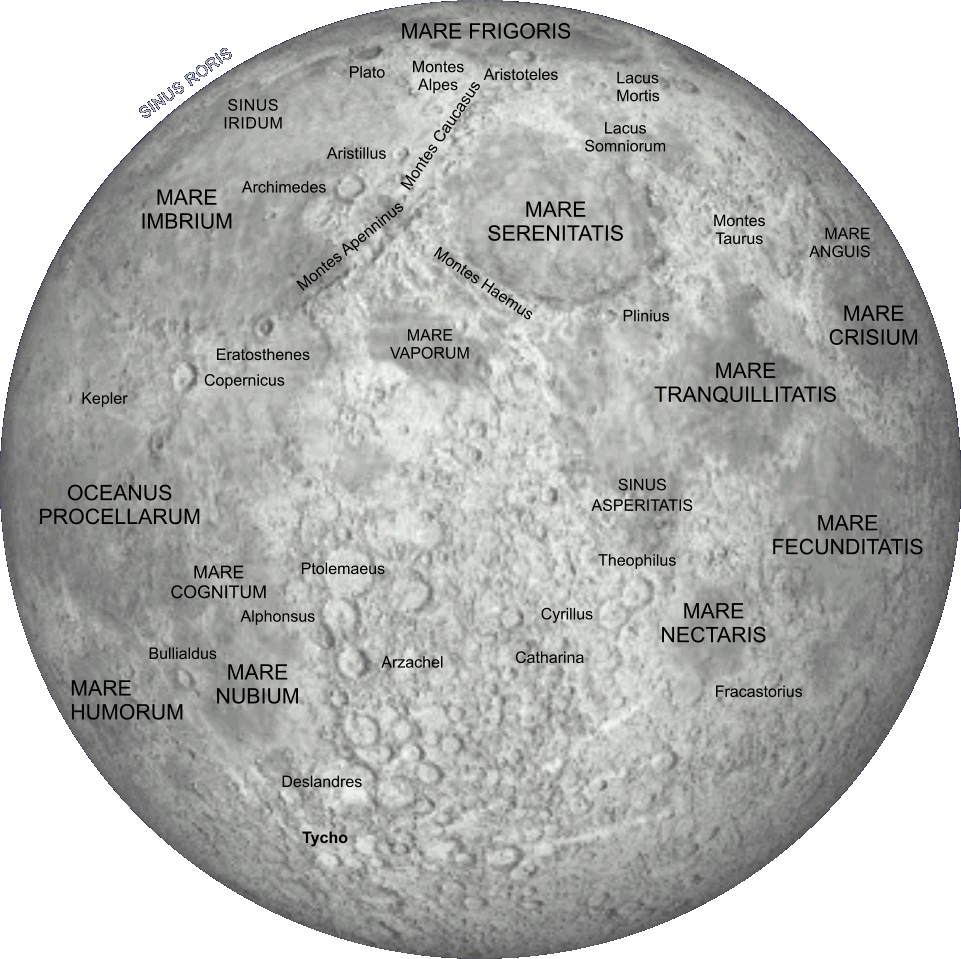| Proper Name | The Moon | | Primary Planet | Earth | | Orbital Period | 27.4 days | | Distance from Earth | Semi-Major Axis: 384,400 km
Perigee: 363,300 km
Apogee: 405,500 km
| | Eccentricity | 0.0549 (mean) | | Rotation Period | 655 hours, 43 minutes | | Magnitude | Full: -12.6, New: -2.5 | | Mean Diameter | 3,476 km
2,159 miles | | Notes | The single Moon of Earth is the fifth largest in the Solar System, comparable in size to Jupiter's moons of Io or Europa. It is tidally locked to Earth, so that from that planet, only one face remains permanently visible. This nearside face is marked by darker, relatively featureless regions known as maria or 'seas', features which are comparatively rare on the hidden farside of the Moon. |


Key features on the visible face of the Moon.
The single large moon of the planet Earth. A cratered and barren body, its orbit is such that, within certain minor variations, it always shows the same face towards its mother planet.

The first sliver of a New Moon, when the Moon begins to move away from the Sun in the sky, appears at intervals of about 29½ days. This regular event forms the basis of some of Earth's oldest calendars.
| 
|
|
|
v2.1g
eSky © copyright Mark Fisher 1999-2025
Surface maps courtesy Jet Propulsion Laboratory. Copyright © California Institute of Technology, Pasadena, CA. All rights reserved.